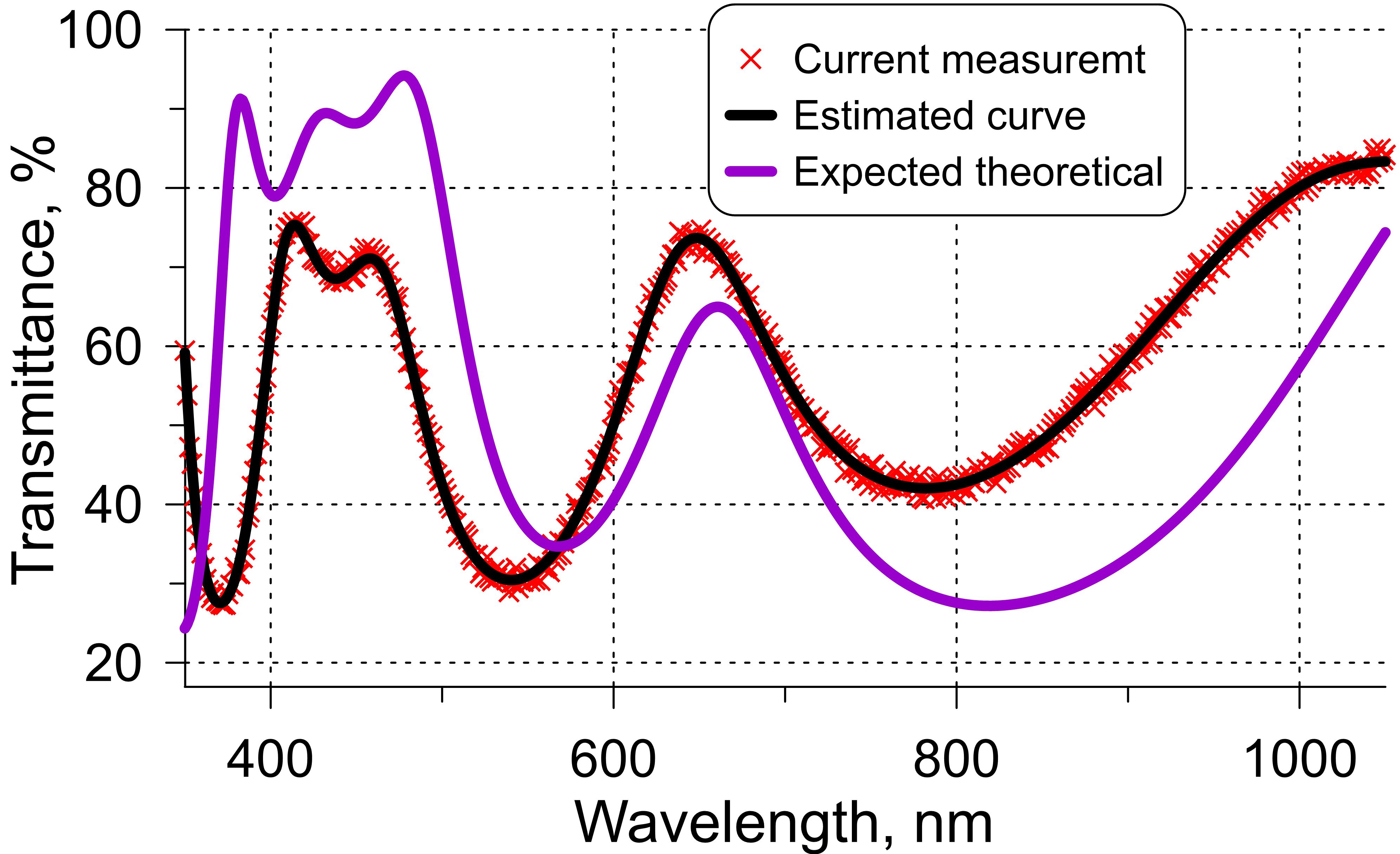Inline Analysis and Layer Deposition Termination
To predict termination points for the current layer deposition, Analysis/Termination algorithms of taReo can be utilized. Implementation of these algorithms into production process is illustrated in Fig. 1.
The algorithms require a multilayer design, optical parameters of the layers (refractive indices and extinction coefficients), as well as the optical parameters of substrates, test glasses, or witness chips. Assuming that taReo can acquire real-time measurement data scans (inline measurement data flow), it can accurately estimate the termination time point (trigger point) and send it to your control software. This, in turn, can send a termination signal to the deposition plant. Ultimately, the intended design will be produced.

Fig. 1. Implementation taReo Analysis/Termination algorithms: prediction of the termination point based on the analysis of measurement inline data.
Inline measurement scans
Deposition plants equipped with BBM enable recording inline measurement data. taReo algorithms are designed to work with two types of inline experimental data: measurement data and measurement scans.
Inline measurement scans are captured at frequent intervals, typically every 1-2 seconds. The accuracy of these scans is generally lower compared to offline spectral photometric/ellipsometric measurements.
Additionally, after the deposition of each layer, measurement data can be recorded. Typically, this data represents averaged values obtained from multiple measurement scans. taReo utilizes these data for inline characterization through its specialized algorithms.
Fig. 2 shows expected theoretical curve (magenta) after deposition of the fifth layer of a multilayer design shown in Fig. 3. Red crosses represent a current measurement scan corresponding to the growing fifth layer (Fig. 3). The black curve shows a model curve found by taReo.

Fig. 2. Example of on-line analysis and prediction of termination time point: red crosses present a current measurement scan and black curve shows the corresponding fitted transmittance. Magenta curve indicates theoretical transmittance that should be achieved.
Unique and useful feature of taReo is its ability to identify and exclude poor-quality measurement scans from the analysis and characterization processes, employing intelligent algorithms for this purpose.
The highly efficient algorithms of taReo enable the prediction of the termination time point for the current layer. In Figure 2, the thicknesses of the first four layers are fixed, while the fifth layer continues to grow.
Prediction of layer termination point

Fig. 3. Example of the on-line analysis and prediction of termination time point: four layers have been already deposited, the fifth layer is growing. Current measurement transmittance of the structure is shown in Fig. 2 by red crosses. Current model transmittance is indicated in Fig. 2 by the black curve.
In practice, measurement errors and process instabilities can lead to accumulation of thickness errors. In its turn, it can lead to unreliable determination of the termination time points. A combination of Analysis/Termination with taReo Inline characterization and Inline Reoptimization is recommended in such cases.





















